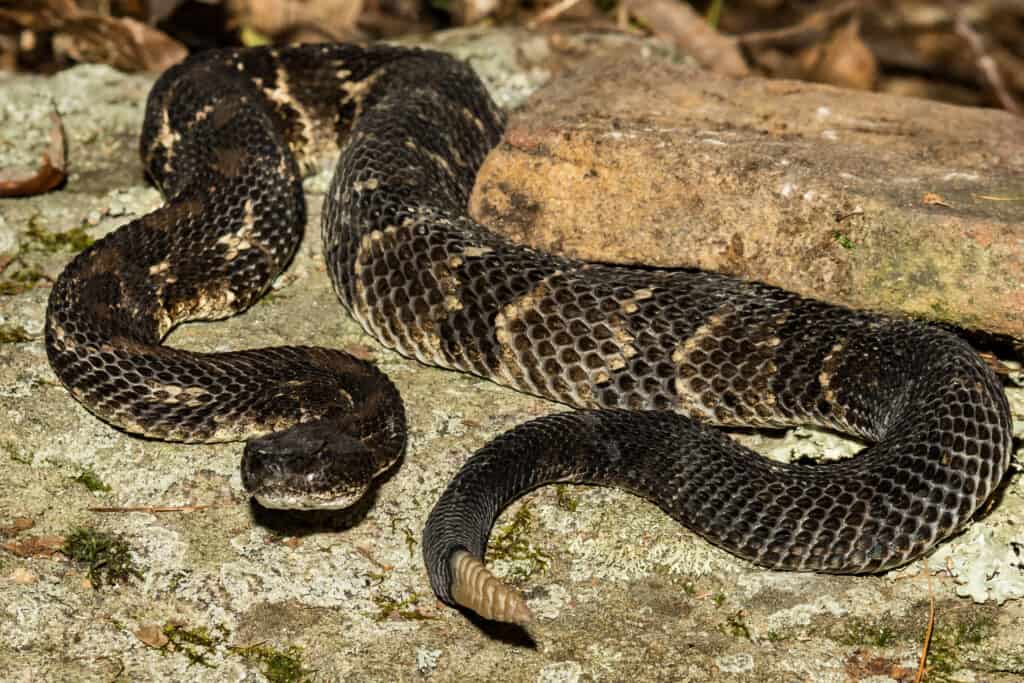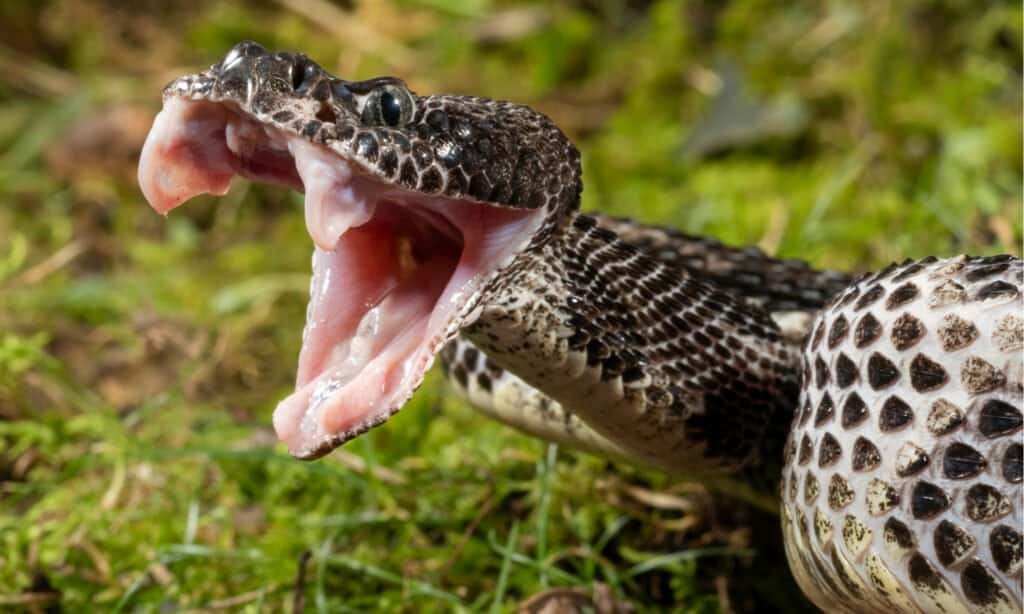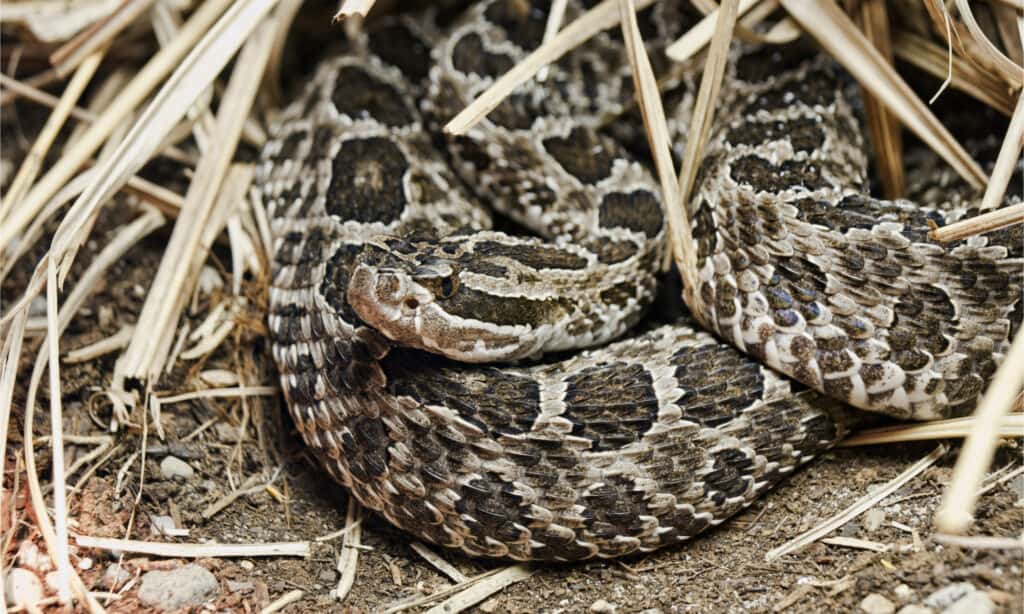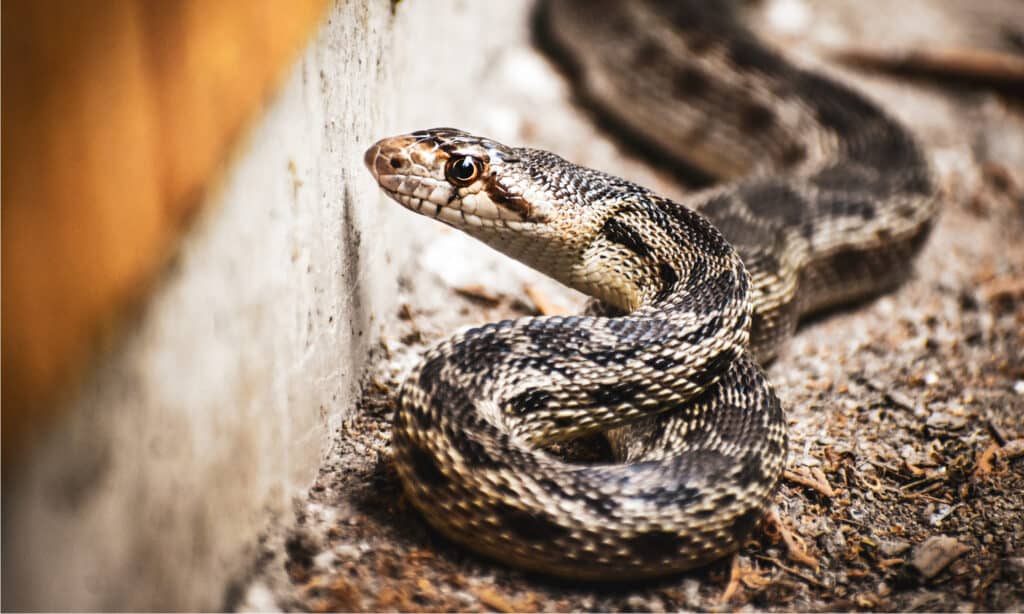Minnesota is not only the “Land of 10,000 Lakes” but also a beautiful Midwestern state filled with prairies, forests, and meadows. Within the natural and urbanized habitats in this state live 17 different species of snakes. However, only two of these snakes are venomous and potentially dangerous, although both snakes are shy and avoid humans as much as possible. Even so, many people still harbor both a strong fear and hatred for snakes and often persecute and harm any snake they can find. Even harmless, nonvenomous snakes are often at risk, as many of them mimic rattlesnakes by vibrating the end of their tails to appear more daunting.
The truth is that snakes are not only beneficial to the environment but also vital to the ecosystems in Minnesota, and they rarely ever pose a threat to humans. The only two venomous snakes in the state are rattlesnakes, and both live only in the southeastern portions of Minnesota. Even then, these snakes are extremely rare and almost never encountered. In fact, Minnesota’s Department of Natural Resources is currently working to protect and help rebuild rattlesnake populations here because they are so rare. Let’s take a closer look at the 2 types of rattlesnakes in Minnesota!
1. Timber Rattlesnake

Timber rattlesnakes are among the most venomous snakes in the United States.
©iStock.com/JasonOndreicka
| Timber Rattlesnake | |
|---|---|
| Range | Southeast Minnesota |
| Length | 36-60 inches |
The largest of the two types of rattlesnakes in Minnesota are timber rattlesnakes. However, timber rattlesnakes are some of the least aggressive rattlesnakes. They are shy and secretive, and it takes quite a lot to provoke a timber rattlesnake into striking.
Timber rattlesnakes only live in the southeastern counties of Minnesota, typically in bluffland habitats and rocky areas. They are particularly fond of regions in the Mississippi River Valley that have forested bluffs, bluff prairies, or rock outcroppings that face south. Being cold-blooded reptiles, timber rattlesnakes need both cooler and warmer areas to help regulate their body temperatures.
In comparison to Minnesota’s other snake species, the timber rattlesnake is generally easy to identify. This snake has a large, heavy body, usually between 36-60 inches long. Its scales are dark brown, yellow, or gray, with distinctive dark chevron bands running along its body. Timber rattlesnakes also have a solid black tail tipped with a large tan or gray segmented rattle. Some people call these snakes “Velvet-Tail Rattlers.”
Timber rattlesnakes have broad, triangle-shaped heads, two facial pits for heat-sensing, and elliptical pupils. Of course, it’s best not to get close enough to them to see some of these smaller characteristics.
These snakes are extremely venomous, but surprisingly, they do not pose much of a threat to humans. This is because they are typically very docile and shy and prefer to hide or flee than fight and strike. In fact, most timber rattlesnake bites happen because a human accidentally stepped on a well-camouflaged snake.
Conservation Of The Timber Rattlesnake In Minnesota

The population of timber rattlesnakes in Minnesota has dropped so drastically in the past 100 years.
©Joe McDonald/Shutterstock.com
Despite their non-threatening demeanor, many humans still harbor a great deal of hatred and/or fear toward these large rattlesnakes. In fact, human violence (both intentional and unintentional) is the primary reason that the population of timber rattlesnakes in Minnesota has dropped so drastically in the past 100 years.
Back in 1909, the state declared a bounty on timber rattlesnakes, which severely depleted their numbers. During the 1940s, for example, the bounty in Houston County turned out 6,000 snakes, but by 1987, that number had decreased to less than just 200. Fortunately, this bounty was reversed in 1989, and timber rattlesnakes were listed as a special concern species in Minnesota. In 1996, their status changed once again to a threatened species. Even today, their populations continue to struggle in Minnesota.
For the past 20 years, many people in Minnesota have been hard at work learning more about these extremely misunderstood snakes. They have been researching their reproduction and DNA and assessing their movements and habitats. Additionally, efforts to educate the public about the timber rattlesnake have been steadily growing, especially in southeastern Minnesota. The state also started the “Rattlesnake Responder Program,” which relocates timber rattlesnakes that landowners may find on their property.
2. Eastern Massasauga Rattlesnake

Eastern massasauga rattlesnakes live in the upper, Midwest regions of the United States and in southern Ontario in Canada.
©Ryan M. Bolton/Shutterstock.com
| Eastern Massasauga Rattlesnake | |
|---|---|
| Range | Southeast Minnesota (very limited) |
| Length | 18-30 inches |
Minnesota’s other rattlesnake species is the eastern massasauga rattlesnake, one of three subspecies of the massasauga rattlesnake. Eastern massasaugas also live in the southeastern portions of the state, but they are even rarer than timber rattlesnakes. In recent years, researchers have struggled to find evidence of their historical den sites or established breeding populations near the Mississippi River.
Eastern Massasauga rattlesnakes prefer more moist habitats, like swamps, bogs, and marshes. However, like the timber rattlesnake, they also need sunny areas for thermoregulation and often move between their wet habitats and sunny, drier areas like pastures and old fields. During the winter, they brumate in rock crevices, tree stumps, or mammal burrows.
Unfortunately, many of these habitats have been repurposed for grazing, plowing, draining, and development. Eastern Massasauga rattlesnakes are extremely rare in Minnesota and were listed as an endangered species in 2016. Although these snakes are also persecuted by humans, a large part of their declining populations is due to habitat loss as well.
Timber rattlesnakes and eastern Massasauga rattlesnakes are easy to distinguish due to their size difference and distinctive markings. Eastern massasauga rattlesnakes are much smaller and grow between 18-30 inches long with very small rattles on the end of their dark banded tails. Their bodies are a grayish-brown color, with darker brown, rounded blotches along their backs, and 2-3 rows of smaller spots along their sides. They have wide triangular-shaped heads with heat-sensing pits on their faces and elliptical pupils.
Conservation Of The Eastern Massasauga Rattlesnake In Minnesota

Eastern Massasauga rattlesnakes are small and secretive.
©DnDavis/Shutterstock.com
Minnesota’s Department of Natural Resources is also working to preserve and protect eastern Massasauga rattlesnakes. Due to their smaller size, collectors illegally catch these snakes for the exotic pet trade. Thus, a major part of Massasauga’s protection is making sure the snakes are not collected or killed on purpose. Another important aspect is making sure their habitats are not ruined by things like farming, construction, or changes to rivers. Maintaining open areas near where Massasaugas live is important. This can be done by minimizing dredging and stream channelization, as well as controlled burning (setting fire to areas on purpose) to recondition open areas in their habitat.
Other Types Of Snakes In Minnesota

Gopher Snakes are a non-venomous species found in Minnesota.
©Cedar Dobson/Shutterstock.com
Of the 17 different species of snakes found in Minnesota, the gopher snake is not only non-venomous but can be a benefit to have around. While the gopher snake, which can reach up to nine feet long, is typically docile and poses no threat to humans, the same can’t be said for rodents. Farmers may want to keep this serpent around as they feed on the small rodents that have been known to damage crops. They are even known to keep rattlesnakes away from areas where they reside as they compete for the same food sources.

De Kay’s brown snakes sometimes have stripes on the side of their head.
©iStock.com/mynewturtle
De Kay’s brown snake is a docile, non-venomous snake that prefers to spend most of its time either underground or in shady locations. It is a relatively small snake, only growing up to 12 inches long, and prefers a diet of slugs, earthworms, and snails. These nocturnal serpents are rarely found in the open, being very secretive, and only coming out to eat and are commonly misidentified as another type of snake, quite often being thought of as a baby snake due to their small size.
The photo featured at the top of this post is © iStock.com/NajaShots
Discover the "Monster" Snake 5X Bigger than an Anaconda
Every day A-Z Animals sends out some of the most incredible facts in the world from our free newsletter. Want to discover the 10 most beautiful snakes in the world, a "snake island" where you're never more than 3 feet from danger, or a "monster" snake 5X larger than an anaconda? Then sign up right now and you'll start receiving our daily newsletter absolutely free.
Sources
- Department of Natural Resources, Available here: https://www.dnr.state.mn.us/livingwith_wildlife/snakes/index.html
- Department of Natural Resources, Available here: https://www.dnr.state.mn.us/rsg/profile.html?action=elementDetail&selectedElement=ARADE03010
- Department of Natural Resources, Available here: https://www.dnr.state.mn.us/rsg/profile.html?action=elementDetail&selectedElement=ARADE02040
- Department of Natural Resources, Available here: https://files.dnr.state.mn.us/eco/nongame/projects/tr_recovery_plan_final2009.pdf
Thank you for reading! Have some feedback for us? Contact the AZ Animals editorial team.







